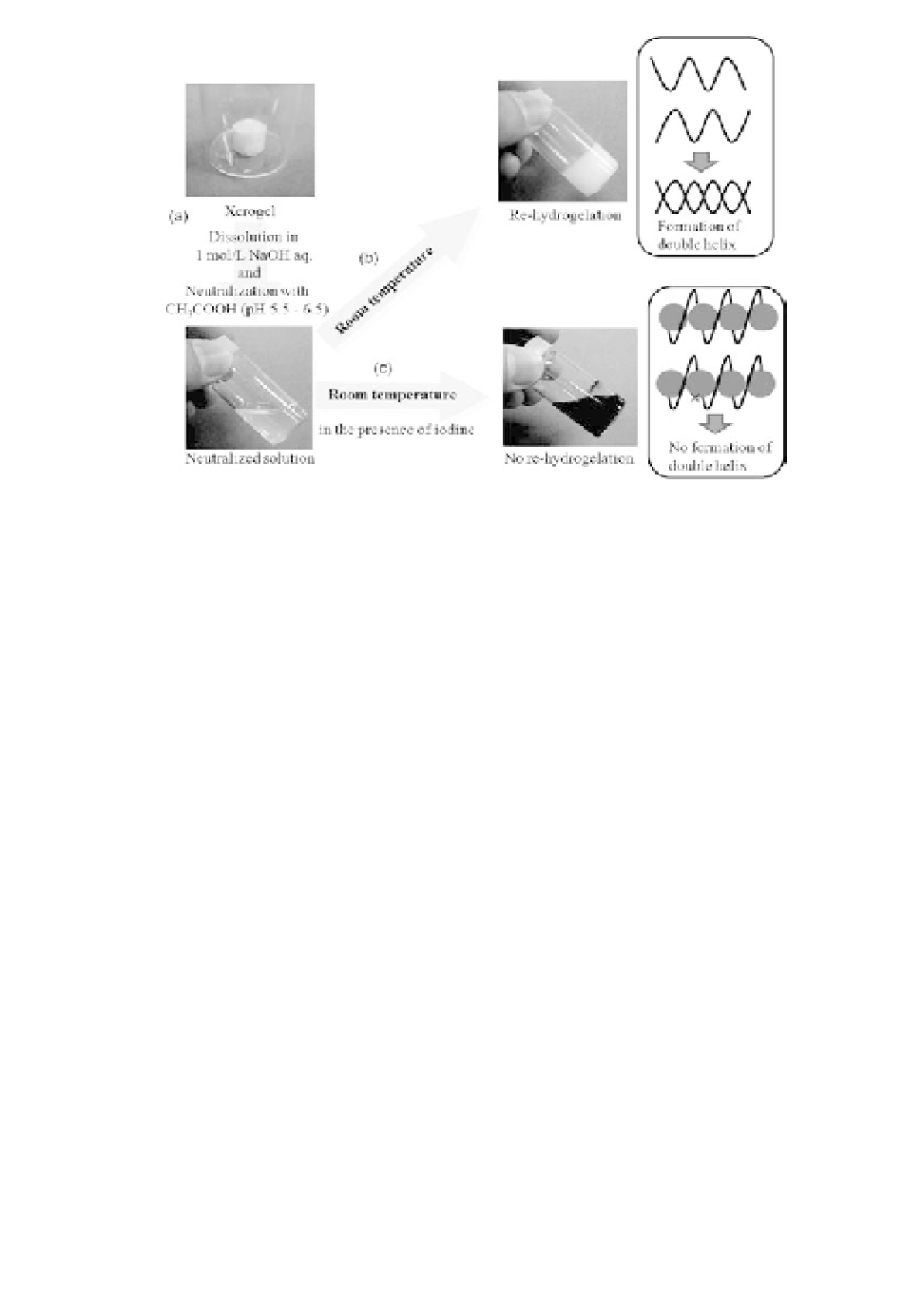Biology Reference
In-Depth Information
Figure 4.6
Dissolution of xerogel (a), re-hydrogelation (b), and suppression
of re-hydrogelation in the presence of iodine (c).
experiment, iodine was included by the elongated amylose chain
to form the well-known amylose/iodine inclusion complex, which
suppressed the formation of the double helix as the junction zone.
References
1. Kitamura, S. (1996). Starch, polymers, natural and synthetic, In
The
Polymeric Materials Encyclopedia, Synthesis, Properties and Applications
(Salamone, C., ed), Vol. 10 (CRC Press, NY), pp. 7915-7922.
2. Gidley, M. J., and Bulpin, P. V. (1989). Aggregation of amylose in aqueous
systems: The effect of chain length phase behavior and aggregation
kinetics,
Macromolecules,
22
, pp. 341-346.
3. Niemann, C., Sanger, W., Pfannemüller, B., Eigner, W. D., and Huber, A.
(1991). Phospholytic synthesis of low-molecular-weight amyloses
with modified terminal groups; comparison of potato phosphorylase
and muscle phosphorylase b, In: (Comstock, M. J., ed.),
ACS Symposium
Series
(ACS Books Advisory Board), pp. 189-204.
4. Takata, H., Takaha, T., Okada, S., Takagi, M., and Imanaka, T. (1998).
Purification and characterization of
α
-glucan phosphorylase from
Bacillus stearothermophilus
,
J. Ferment. Bioeng.,
85
, pp. 156-161.

